If you are looking to get your traditional textbooks for free, be sure to check your college library or borrow from a friend. Even if the library doesnt have it, they may have an older version that will be pretty much the same, though page numbers may be slightly off and the chapters may be moved around in an effort to make the book appear different.
However, what this article covers is textbooks that are considered to be free and open: Open Textbooks. This relatively new form of course material is gaining awareness and could totally disrupt the $8.212 billion college textbook market with the proper adoption and execution.
What are Open Textbooks?
{mosimage}Open textbooks are typically authored by experts in academia and published on the Internet, enabling free online access to the textbook. With open textbooks students can read the full text free online, download a printable PDF, or purchase a hard copy at a fraction of the cost of traditional textbooks.
They are considered open because of the Creative Commons license they are typically given, which enables instructors to edit and customize textbook content to their liking to better fit course content by removing unneeded chapters and/or adding new material. These free textbooks arent just thrown together course lectures either, these are academically reviewed and edited, legitimate textbooks.
Open means groups and individuals can edit and improve the textbook. In this process errors in the book can be easily found and fixed, in a much easier process than traditional so-called reliable texts. There are many free textbooks available in this open format that can rival many $150 textbooks. These books have been tried and tested in multiple classrooms, peer-reviewed, and have received feedback and collaboration on improving the text and keeping it updated.
With the emergence of portable reading devices like the iPad and Nook, open textbooks can be used at no cost to the student. Open textbooks can also be accessed via laptop, and since most college students already have a laptop computer, it makes since to make the push into this relatively new form of textbook.
Why Open Textbooks?
Scott McNealy, founder of Curriki, an online hub for free textbooks and other course material, said it best: We are spending $8 billion to $15 billion per year on textbooks It seems to me we could put that all online for free.
Each student on average spends about $1000 per year on textbooks. With your average textbook selling for $175 new, it is evident how these freely available textbooks would greatly help any cash-strapped student. An open textbook brings quality and value to the classroom.
Even non-students should be supporting open textbooks. More affordable textbooks could mean taxpayer savings. The State spends millions of dollars every year on financial aid, some of which pays for textbooks.
Adoption of open textbooks will produce a better quality product than traditional texts. Open contribution will result in higher quality production thanks to the collaboration of many minds in the academic arena.
The current textbook market is dominated by 5 major companies, so theres very little competition on price. Open textbooks hope to reshape the captive market of textbook publishing and aim to create a world where each and every person on earth can access and contribute to the sum of all human knowledge.
Where to get Free (Open) Textbooks
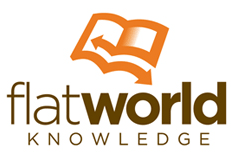
Flat World Knowledge offers peer-reviewed and edited, highly developed textbooks written by expert authors and makes them available free online, affordable offline, open-licensed, and customizable by educators. Adoption of a Flat World Knowledge textbook is easy: educators search Flat Worlds catalog, request a review copy or review the book online, complete an online adoption form, and provide the online textbook URL to students. Students then choose their preferred format of the textbook (online, print, audio, PDF).
The textbooks are open for modifying, if the instructor would like to customize the text for their own course. The textbooks can be customized using Flat Worlds build-a-book platform which puts educators in control of the textbook. Educators can drag-and-drop chapters into a new table of contents that fits the course syllabus, add or delete chapters, paragraphs, sentences, examples and more. When teachers are done, a special URL is created specifically for the textbook. The book is then freely accessible to students online.
Dont want to read online?
While Flat World textbooks are free to read online, options are available for students who wish to own a hard copy. Starting at $24.95, users can download a PDF file of the textbook and print themselves. For $34.95, Flat World ships a basic black-and-white version of the book. Paying $69.90 gives users a full-color edition of the book in its original format, which is more affordable than a traditional textbook that (on average) sells for $175. Other alternative formats and supplements include POD editions, e-books (in epub, .mobi and PDF formats), audio books, purchase of individual chapters, and study aids, such as interactive quizzes and flashcards.
The focus of many of the textbooks in the Flat World Catalog are introductory 101-type textbooks, but more advanced course materials are scheduled for publishing. According to a recent press release, more than 1,600 professors at over 900 colleges have used Flat World textbooks, ranging from Cornell University to Columbus State Community College to California State University. 100,000 students will use Flat World Knowledge textbooks in the 2010-2011 academic year.
Bookboon provides free textbooks that can be downloaded (without registration) in PDF making the books easily accessible and/or printable for use offline. The books do include advertisements (about on every third page) to help pay for the production costs of the book. Most of the books are in subjects related to engineering, information technology, economics, and finance.

MERLOT (Multimedia Educational Resources for Learning and Online Teaching) is a free and open online community of resources designed primarily for faculty, staff and students of higher education from around the world to share learning materials and methods. Their peer-reviewed online learning materials include a collection of over 900 open textbooks.

Connexions is a place to view and share educational material made of small learning sets called modules that can be organized as courses, books, reports and more. Connexions is one of the most popular open education websites with content from all over the world in a variety of languages. Its 17,000+ learning modules and over 1000 collections (textbooks, journal articles, etc.) are used by over 2 million people per month. Materials are easily downloadable to almost any device for use. You can view content over the internet for free, download free PDFs for use offline, or download free EPUB versions of the content for use on e-readers and mobile phones. Schools can also order low-cost hard copies of the textbook.
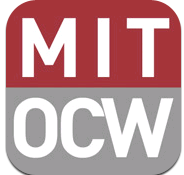
In 2002, MIT put its entire course catalog online and gave a jump-start to the global Open Educational Resources movement. This year they are celebrating 10 years of service and OpenCourseWare materials have now been accessed by over 100 million individuals. While the majority of the content on MIT OCW is web-based publication of MIT courses (2,035 as of December 2010) and materials, the site also contains complete textbooks written by MIT professors.
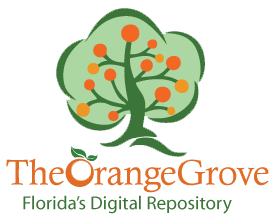
A project of the State of Florida, the Orange Grove is a searchable and well organized repository of open textbooks and other digital resources. You can download the textbooks in PDF (free), or purchase a low-cost print version of the textbook. The Orange Grove has a collection of over 250+ open textbooks.
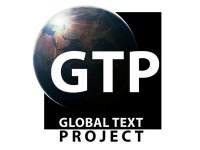
The Global Text Project has a library of dozens of open textbooks and out-of-print books with open licenses. Hosted by the University of Georgia's Terry School of Business, most of the books are available for free as a PDF download. Their goal is to make textbooks available to those who cannot afford them, and for those who use the books (instructors and students) to actively engage in improving the quality of the open textbook.

Their goal is to raise the awareness and adoptions of open textbooks among community college instructors, students, authors, and state legislators. They provide training for instructors adopting open textbooks, write reviews of open textbooks (over 100+), and mentor professional networks that provide support for authors who open their material. They help point educators in the right direction by providing a guide for adopting and by providing reviews and links to widely available open textbooks, viewable by subject.
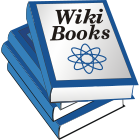
Wikibooks is a collection of open-content textbooks in many diverse areas that anyone can edit. Wikibooks contains textbooks, annotated texts, instructional guides, and manuals. These materials can be used in a traditional classroom, a home-school environment, as part of a Wikiversity course, or for self-learners.

Many open educational resources (OER) can be found on the Internet. Sometimes, finding those resources can be a difficult, time-consuming process. The OER Commons website was created to organize these resources to help educators and students quickly and easily find Open Educational Resources posted on the Internet. The site is a structured database of links to high-quality resources found on other websites and contains full university courses complete with readings, videos of lectures, homework assignments, lecture notes, interactive mini-lessons, and peer-reviewed open textbooks. OER Commons provides a single point of access through which teachers and students can search, browse, evaluate, and discuss open resources.
The Online Books Page is an extensive catalog listing more than 1 million free books on the web, including textbooks. The site is hosted by the University of Pennsylvania library.
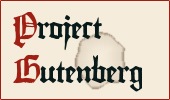
Project Gutenberg is the first and largest single collection of free ebooks. Michael Hart, the founder of Project Gutenberg, invented eBooks in 1971. The site has over 33,000 books you can download for free and read on your computer, iPad, Kindle, Nook, Sony Reader, iPhone, Android or other portable device. Formats include ePub, Kindle, HTML and simple text formats. While you may not find too many textbooks listed, we wanted to include Project Gutenburg in this list because of its extensive collection of free books, as many well known classics can be accessed.

Primarily meant for research, Questia is the first online library that provides access to the world's largest online collection of learning materials in the humanities and social sciences. The site contains a full-text online library with over 77,000 copyrighted books in its database, as well as newspaper, magazine, and journal articles. This is content that is typically not available elsewhere on the Internet. You can search each and every word of all of the works in the collection and can read and access every book cover to cover.
To complement the library, Questia offers a range of search, note-taking, and writing tools. These tools help students locate the most relevant information on their topics quickly, quote and cite correctly, and create properly formatted footnotes and bibliographies automatically.
Free K-12 Textbooks
This article is dedicated to finding free college textbooks. However, free K-12 level textbooks can still be found at a few of the open textbook depositories listed on this page. Those looking for free digital textbooks in K-12 should also check ck12.org and curriki.org for customizable, standards-aligned textbooks that conform to national and state textbook standards.
Free Textbooks By Subject
A few notable links to websites dedicated to providing a free and open textbook in a certain subject:
Math
Economics
Science & Math
Physics
Computer and math books
Intro to Calculus
Business
Calculus
Physics
Linear Algebra
Many others can be found by searching the OER Commons.
The Move to Digital Textbooks
One out of four college textbooks will be digital by 2015. We have reached a tipping point where the table is set for the movement to digital textbooks. With record sales of devices and readers like the iPad, now is the time to make that move. And if we move fast enough, we can get the use of free open textbooks established before major textbook publishers take over the digital market with their DRM, you-can-only-view-the-textbook-on-your-device-for-so-long, used-textbook market killer: the eTextbook.
What you can do
Spread the word
Students should take action against high textbook prices by spreading the word about open textbooks on campus and with faculty. Tell your professors to join thousands of other teachers who are advocating the use of open textbooks by signing the Faculty Statement on Open Textbooks. Take action: tell your teachers, print and share this article, share it on facebook and Twitter.